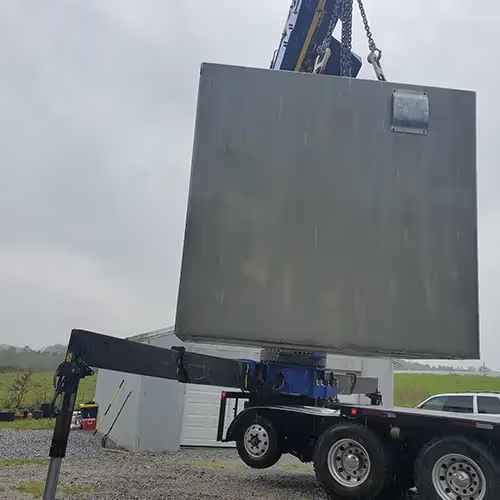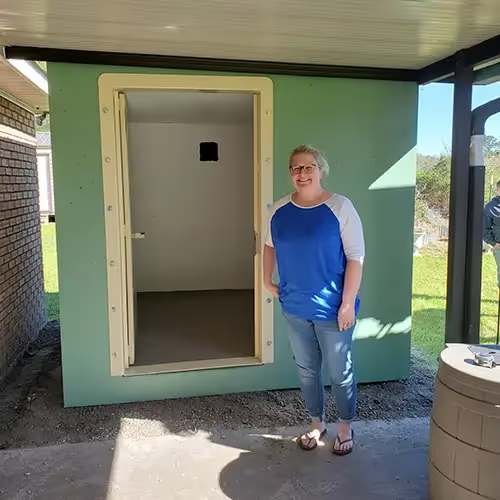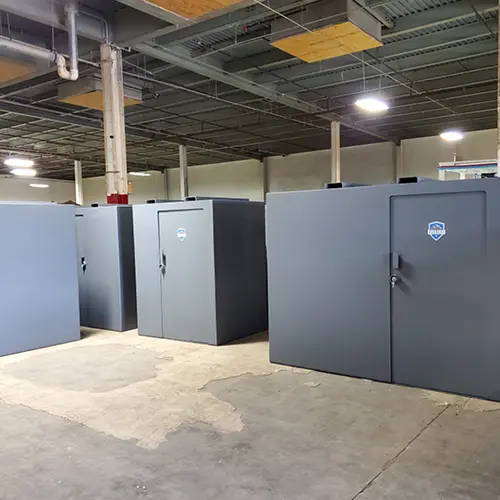Storm Shelter vs Storm Cellar: Key Differences You Should Know


When a storm warning hits, your first thought is likely, “Where can I keep my family safe?” That’s where storm shelters and storm cellars come into the picture, but many people don’t realize they’re not the same thing. If you’ve ever wondered which option is right for your home, you’re not alone. Understanding the differences between a storm shelter and a storm cellar can save you time, money, and confusion. These structures serve the same purpose, protecting you from severe weather, but they’re designed and built differently. Knowing how they compare, including storm cellar vs shelter features, will help you make a smarter choice for your safety and budget.
This matters because choosing the right type of protection, such as a tornado safe room or hurricane storm shelter, can mean greater peace of mind during tornado season or unexpected severe storms. With proper planning, you can evaluate options like underground storm shelters or above-ground storm shelters based on your property, budget, and family needs. In this post, we’ll break down the key differences between storm shelters and storm cellars in simple terms, including storm shelter benefits, storm cellar construction, storm shelter materials, storm shelter dimensions, and storm cellar depth requirements. By investing a little time in research and planning, you can ensure your family has reliable protection and peace of mind, no matter how severe the storm.
A Brief Look at Storm Safety Structures
The concept of having an emergency preparedness shelter isn’t new. It has been part of storm-prone communities for generations. Early versions of backyard storm cellars were common in rural areas across the Midwest and South, where tornadoes struck with little warning. Families dug underground storm shelters to escape high winds, hail, and flying debris. These early shelters laid the foundation for modern storm cellar construction practices and shaped the way storm shelters are designed today.
At the core, storm shelters and storm cellars serve the same purpose but differ in design and materials. A storm cellar is typically underground, offering protection through storm cellar protection using earth and reinforced concrete, while a storm shelter may be above ground or underground, built from storm shelter materials like steel or engineered concrete. Modern residential storm shelters often include features like ventilation, lighting, and space efficiency. The difference in design and usability highlights the importance of comparing storm cellar vs shelter before making a decision. Proper knowledge also informs decisions regarding storm cellar depth requirements, storm cellar waterproofing, and ongoing storm shelter maintenance to ensure long-term safety.
Understanding the Core Differences Between Storm Shelters and Storm Cellars
At first glance, storm shelters and storm cellars may seem interchangeable. Both promise safety during extreme weather, but they differ in key areas: design, placement, accessibility, and materials. These differences influence the cost of storm shelter, user convenience, and long-term durability. For families seeking reliable protection, evaluating factors like storm shelter installation, DIY storm shelter options, and certified storm shelter contractors is essential.
Key differences include:
- Location – Storm cellars are mostly underground, often in backyards, whereas storm shelters can be installed above ground or underground for quicker accessibility.
- Construction Materials – Cellars use earth and concrete, while shelters rely on steel, engineered concrete, or prefabricated materials.
- Accessibility – Underground cellars require stairs; residential storm shelters or tornado safe rooms provide easier entry, especially for children, seniors, or people with mobility challenges.
- Safety Standards – Modern storm shelters meet FEMA guidelines, while older storm cellars may not meet current standards.
- Comfort & Usability – Storm shelters often include storm cellar ventilation, lighting, and optimized interior space; traditional cellars may feel damp or confined.
For example, a family in Oklahoma may install an above-ground storm shelter, benefiting from storm shelter financing and prefabricated designs, while a rural Kansas homeowner prefers a backyard storm cellar, using the earth for natural protection. Both options provide safety, but the choice depends on lifestyle, accessibility, budget, and preference.
Why Choosing the Right Storm Protection Matters
Investing in a storm shelter or storm cellar isn’t just about protection; it’s about peace of mind and long-term preparedness. A dedicated emergency preparedness shelter withstands extreme conditions and reduces anxiety during tornado warnings. Beyond immediate protection, these structures offer storm shelter benefits like increasing property value, community resilience, and overall household safety. Storm shelter resale value can also be an important factor for homeowners planning future sales.
Benefits include:
- Reliable Safety – Both storm shelters and storm cellars protect against debris, high winds, and pressure changes during tornadoes and severe storms.
- Peace of Mind – Knowing you have a designated safe space alleviates fear during severe weather alerts.
- Accessibility Options – Above-ground storm shelters allow quick entry, while underground storm cellars provide traditional, time-tested protection.
- Increased Property Value – Homes equipped with certified shelters attract buyers in tornado-prone areas.
- Community Resilience – Emergency storm shelter locations can serve extended family or neighbors during critical times.
A well-planned installation, whether a portable storm shelter, residential storm shelter, or traditional cellar, ensures maximum protection. Families in tornado-prone states, such as Arkansas or Oklahoma, benefit from storm shelter dimensions optimized for comfort and survival. The right storm protection improves safety, lifestyle, and overall preparedness.
Challenges of Storm Shelters and Storm Cellars
Like any major investment, storm shelters and storm cellars have challenges that homeowners must consider before installation. The cost of storm shelter construction or installation varies based on materials, size, and location. Underground storm cellars require sufficient backyard space, while above-ground storm shelters may take up room in garages or yards. Accessibility can also be a concern; cellars with stairs may be difficult for seniors, children, or people with mobility issues.
Other challenges include:
- Moisture & Maintenance Issues – Proper storm cellar waterproofing and storm cellar ventilation are essential to prevent mold and dampness.
- False Sense of Security – Some DIY storm shelters may not meet FEMA or storm shelter regulations, giving homeowners a misleading sense of protection.
Solutions include planning with certified storm shelter contractors, selecting the appropriate type of shelter, and exploring storm shelter grants to offset costs. Regular storm shelter maintenance and inspections ensure long-term usability. Understanding these challenges helps homeowners make informed choices, balancing safety, accessibility, and cost while maximizing the benefits of both traditional and modern storm protection.
How to Choose and Prepare the Right Storm Protection
Choosing the right storm protection requires careful planning and consideration of your home’s unique conditions. Start by assessing your region’s storm history, soil quality, and available space. Establish a budget and research storm shelter financing, grants, or rebates. Then determine if an above-ground storm shelter or underground backyard storm cellar fits your household’s needs.
Practical steps:
- Assess Your Risks – Include storm history, soil conditions, and available backyard space.
- Set a Budget – Explore storm shelter grants and financing opportunities.
- Choose Your Type – Decide between tornado storm cellars, residential storm shelters, or portable storm shelters.
- Work with Professionals – Certified storm shelter contractors ensure proper storm shelter installation and compliance with FEMA regulations.
- Plan for Accessibility – Ensure everyone in your household can access the shelter quickly.
- Maintain Regularly – Schedule inspections, check storm cellar safety tips, and maintain a storm cellar emergency kit.
Following these steps allows homeowners to establish reliable protection while considering comfort, accessibility, and safety. Whether installing a prefabricated storm shelter or constructing a traditional storm cellar, careful planning ensures your family is prepared for severe weather.
Looking Ahead: The Future of Storm Protection
Storm protection is evolving with advances in engineering, materials, and technology. Smart shelters with sensors and automated ventilation, sustainable storm shelter materials, and portable storm shelters are reshaping safety solutions. Communities are also creating shared shelters and emergency storm shelter locations to protect multiple households efficiently.
Key trends:
- Smart Shelters – Integration of sensors, weather alerts, and automated ventilation systems.
- Sustainable Materials – Durable, eco-friendly materials for improved resilience.
- Modular & Portable Designs – Quickly installed and relocatable portable storm shelters.
- Community-Based Protection – Shared shelters for multiple households.
- Improved Accessibility – Inclusive designs for children, seniors, and people with disabilities.
Homeowners, contractors, local governments, and insurance providers benefit from innovations, whether through safer storm cellar construction, storm shelter materials, or improved safety measures. Staying informed allows families to maximize the advantages of both traditional and modern shelters while planning for long-term protection and resilience.
Wrapping Up: Making the Right Choice
Choosing between a storm shelter and a storm cellar is about safety, peace of mind, and long-term preparedness. Consider storm shelter comparison, storm cellar permits, storm shelter reviews, and storm cellar cost estimate to make informed decisions. By investing in a residential storm shelter or backyard storm cellar, homeowners gain reliable protection and peace of mind.
Final steps: evaluate your property, consult certified storm shelter contractors, and maintain your shelter regularly. Whether choosing a prefabricated storm shelter, above-ground storm shelter, or underground tornado storm cellar, preparation is critical. Proper planning, installation, and maintenance ensure your family’s safety and provide confidence during severe weather. Thoughtful consideration of storm shelter dimensions, storm shelter survival tips, and storm cellar safety tips ensures optimal protection, making your home a safe refuge in any storm.




